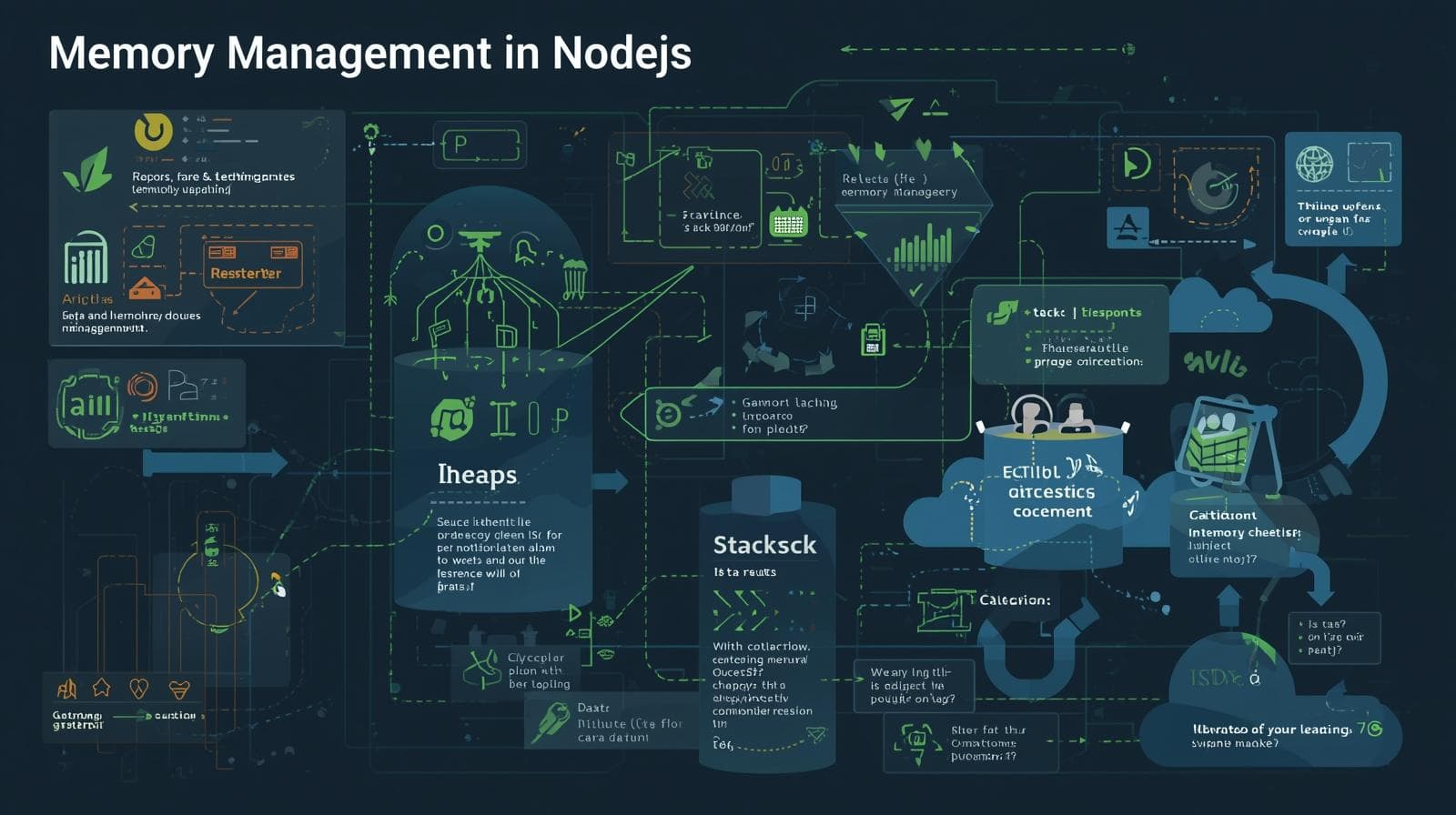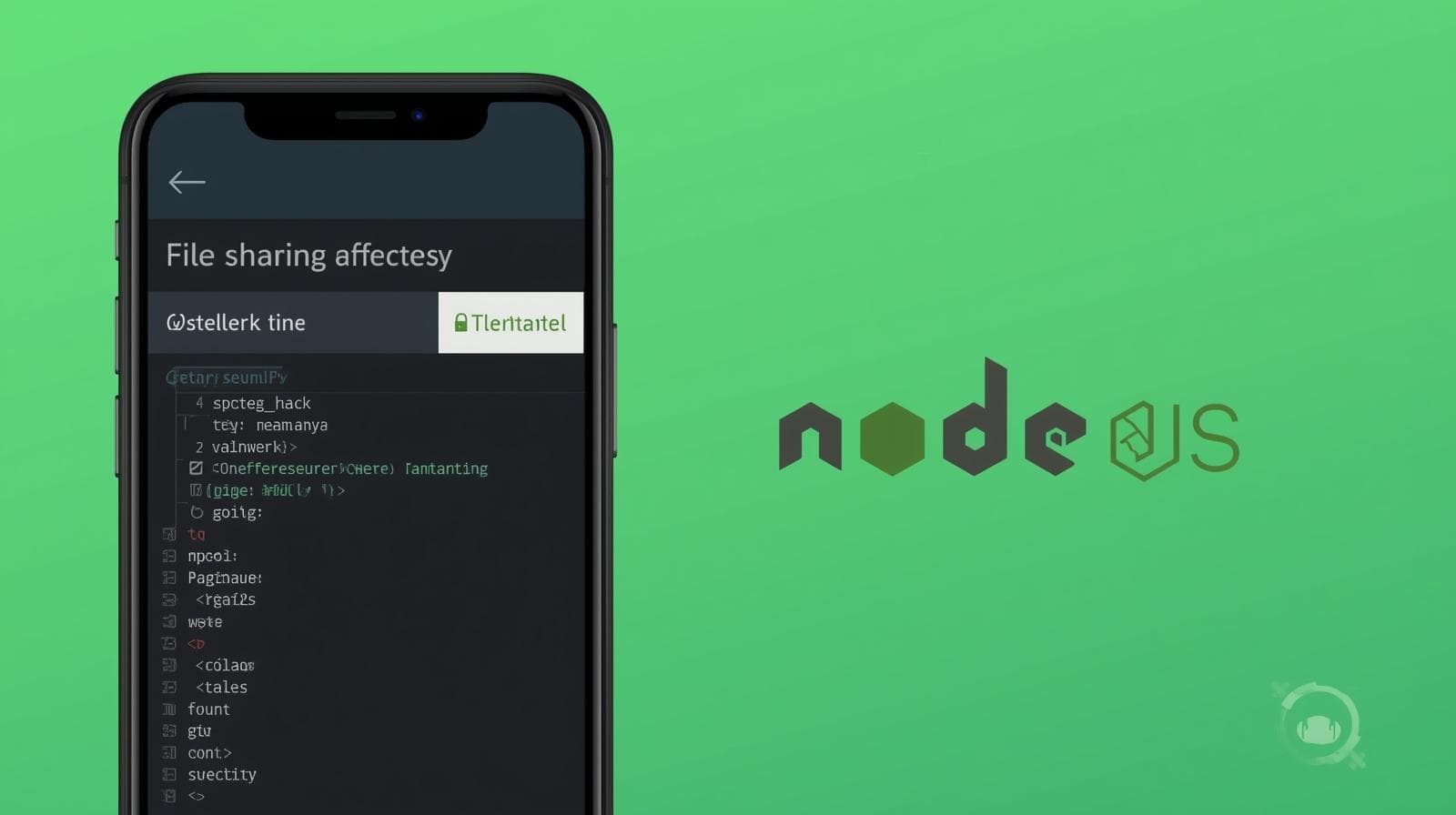Master Asynchronous Programming in Node.js: Callbacks, Promises, and Async/Await Explained

Struggling with Node.js async code? This in-depth guide explains asynchronous programming, callbacks, promises, and async/await with real-world examples and best practices.

Master Asynchronous Programming in Node.js: Callbacks, Promises, and Async/Await Explained
Master Asynchronous Programming in Node.js: From Callbacks to Async/Await
If you've ever written a line of JavaScript for the web, you've already encountered asynchronicity. Maybe it was a setTimeout or a fetch API call. But in Node.js, asynchronous programming isn't just a feature; it's the fundamental bedrock of its entire architecture. It’s what allows a single-threaded environment to handle thousands of concurrent connections, making Node.js a powerhouse for building scalable servers, APIs, and real-time applications.
But let's be honest: when you're starting, wrapping your head around callbacks, promises, and the mystical async/await can feel like trying to solve a Rubik's cube in the dark. You might have seen the infamous "callback hell," or encountered a situation where your code executed in the wrong order, leaving you with undefined variables and a sense of despair.
Worry not! This guide is your lighthouse. We will journey together from the very basics of why Node.js is asynchronous, through the evolution of handling async operations—from callbacks to promises to modern async/await—complete with real-world analogies, code examples, and best practices. By the end, you'll not only understand asynchronous programming but you'll be able to wield it with confidence.
To learn professional software development courses such as Python Programming, Full Stack Development, and MERN Stack, visit and enroll today at codercrafter.in.
Why is Node.js Asynchronous? The Single-Threaded Paradox
To appreciate the "how," we must first understand the "why." Node.js runs on a single thread. In a traditional, synchronous, multi-threaded server (like Apache), every new connection spawns a new thread. For 10,000 concurrent users, you have 10,000 threads. This consumes massive amounts of memory and CPU for context switching, eventually hitting a performance ceiling.
Node.js flips this model. It uses just one thread to handle all requests. But how can one thread serve thousands? The secret is non-blocking, asynchronous I/O.
The Restaurant Analogy
Imagine a restaurant.
Synchronous Restaurant (Blocking): You have one waiter. A customer orders a steak. The waiter goes to the kitchen, stands there waiting for the chef to cook the steak, and only after it's ready does he deliver it and move to the next customer. This is incredibly inefficient. The waiter is blocked, and other customers are left waiting, even if they just want a glass of water.
Asynchronous Restaurant (Non-Blocking): The same single waiter takes an order for a steak. Instead of waiting in the kitchen, he immediately goes back to the dining area, takes orders from other customers, serves drinks, and delivers already-prepared food. He periodically checks on the steak. When the steak is ready, the chef callbacks the waiter (rings a bell), and the waiter then delivers the steak. The waiter is never idle.
In this analogy:
The Waiter is Node.js's single thread (the Event Loop).
The Kitchen represents I/O operations (file system, network requests, databases).
The Bell is the callback function.
Node.js delegates slow tasks (cooking the steak, reading a file, querying a database) to the system kernel (which is multi-threaded) and continues executing other code. When the slow task is complete, it gets handled via a callback. This is the essence of the Event Loop.
The Evolution of Async Patterns in Node.js
The way we manage these asynchronous operations has evolved significantly, making code cleaner and more manageable.
1. Callbacks: The Foundation
A callback is simply a function passed as an argument to another function, which is then invoked ("called back") when the asynchronous operation completes.
Example: Reading a File Synchronously vs. Asynchronously
javascript
// Synchronous (BLOCKING) - Don't do this in Node.js!
const fs = require('fs');
const data = fs.readFileSync('./file.txt', 'utf8');
console.log(data);
console.log("This logs AFTER the file is read.");
// Asynchronous (NON-BLOCKING) - The Node.js Way
const fs = require('fs');
fs.readFile('./file.txt', 'utf8', (err, data) => {
if (err) {
console.error('Error reading file:', err);
return;
}
console.log(data);
});
console.log("This logs IMMEDIATELY, before the file is read.");In the async example, readFile starts the file reading process and then the main thread moves on, executing the console.log. Once the file is read, the callback function (err, data) => { ... } is placed in the callback queue and eventually executed by the event loop.
The Problem: Callback Hell (Pyramid of Doom)
When you have multiple dependent async operations, you end up nesting callbacks inside callbacks.
javascript
getUser(userId, (err, user) => {
if (err) { /* handle error */ }
getPosts(user.id, (err, posts) => {
if (err) { /* handle error */ }
getComments(posts[0].id, (err, comments) => {
if (err) { /* handle error */ }
// Finally, do something with user, posts, and comments
console.log('User:', user.name);
console.log('First Post:', posts[0].title);
console.log('Comments:', comments);
});
});
});This code is hard to read, difficult to debug, and a nightmare to maintain. This is "Callback Hell."
2. Promises: A New Hope
A Promise is an object representing the eventual completion (or failure) of an asynchronous operation and its resulting value. It provides a cleaner, more structured way to handle async flow.
A Promise can be in one of three states:
Pending: Initial state, neither fulfilled nor rejected.
Fulfilled: The operation completed successfully.
Rejected: The operation failed.
Creating a Promise
javascript
const myPromise = new Promise((resolve, reject) => {
// Simulate an async task, e.g., an API call
setTimeout(() => {
const success = Math.random() > 0.5; // Randomly succeed or fail
if (success) {
resolve('Data successfully fetched!');
} else {
reject(new Error('Failed to fetch data.'));
}
}, 1000);
});Consuming a Promise with .then() and .catch()
javascript
myPromise
.then((data) => {
// This runs if the promise is fulfilled
console.log('Success:', data);
})
.catch((error) => {
// This runs if the promise is rejected
console.error('Error:', error.message);
});Rewriting Callback Hell with Promises
Assume getUser, getPosts, and getComments now return Promises.
javascript
getUser(userId)
.then((user) => {
console.log('User:', user.name);
return getPosts(user.id); // Return the next promise
})
.then((posts) => {
console.log('First Post:', posts[0].title);
return getComments(posts[0].id);
})
.then((comments) => {
console.log('Comments:', comments);
})
.catch((error) => {
// A single .catch() for any error in the chain
console.error('An error occurred:', error);
});This promise chaining is flat and much more readable than nested callbacks. Error handling is also centralized in one .catch() block.
3. Async/Await: Syntactic Sugar for Promises
async/await, introduced in ES2017, is the modern way to work with promises. It allows you to write asynchronous code that looks and behaves like synchronous code, making it incredibly intuitive.
async: Placed before a function declaration. It means the function always returns a promise.await: Can only be used inside anasyncfunction. It makes JavaScript wait until the promise settles and returns its result.
Rewriting the Example with Async/Await
javascript
async function fetchUserData(userId) {
try {
const user = await getUser(userId);
console.log('User:', user.name);
const posts = await getPosts(user.id);
console.log('First Post:', posts[0].title);
const comments = await getComments(posts[0].id);
console.log('Comments:', comments);
} catch (error) {
// Handle any error from any of the awaited promises
console.error('An error occurred:', error);
}
}
fetchUserData(123);This is the cleanest version yet. It's linear, easy to follow, and uses standard try/catch for error handling, which developers are already familiar with.
To master these advanced JavaScript concepts and build real-world Full Stack and MERN Stack applications, check out the comprehensive courses at codercrafter.in.
Real-World Use Cases & Examples
Let's solidify these concepts with practical Node.js scenarios.
1. Building a Web Server with Express
Every time a request hits your Express server, you're dealing with an asynchronous event.
javascript
const express = require('express');
const app = express();
// Mock database function that returns a promise
function findUserInDB(id) {
return new Promise((resolve) => {
setTimeout(() => resolve({ id: id, name: 'John Doe' }), 100);
});
}
app.get('/user/:id', async (req, res) => {
try {
const user = await findUserInDB(req.params.id);
if (!user) {
return res.status(404).json({ message: 'User not found' });
}
res.json(user);
} catch (error) {
res.status(500).json({ message: 'Server Error' });
}
});
app.listen(3000, () => console.log('Server running on port 3000'));Here, the route handler is an async function. It awaits the database lookup without blocking the entire server, allowing it to handle other incoming requests.
2. Concurrent Requests with Promise.all()
What if you need to perform multiple independent async operations and wait for all of them to finish?
javascript
async function getDashboardData(userId) {
try {
// Execute these promises concurrently, not sequentially
const [user, posts, notifications] = await Promise.all([
getUser(userId),
getPosts(userId),
getNotifications(userId)
]);
// This will only run after ALL promises are fulfilled
return { user, posts, notifications };
} catch (error) {
// If ANY of the promises in Promise.all rejects, it jumps here
console.error('Failed to load dashboard data:', error);
}
}Promise.all is a massive performance win. Instead of waiting 100ms + 150ms + 50ms = 300ms for sequential await calls, you only wait for the slowest operation (e.g., 150ms).
Best Practices for Robust Async Code
Prefer Async/Await: It's the most readable and least error-prone pattern for new code.
Always Handle Errors: Use
try/catchwithasync/awaitor.catch()with promises. Unhandled promise rejections can crash your Node.js process in future versions.Avoid Blocking the Event Loop: Never use synchronous versions of I/O functions (e.g.,
readFileSync,JSON.parseon a very large file) in your main request-handling code.Use
Promise.allfor Independent Operations: It's a simple and effective way to achieve concurrency.Be Mindful of Parallelism vs. Sequentialism:
Use
Promise.allfor parallel (independent) tasks.Use sequential
awaitfor dependent tasks (where one needs the result of the previous).
Use Linters and Promisify: Tools like ESLint can catch common async mistakes. For legacy callback-based libraries, use
util.promisifyto convert callback functions into promise-based ones.
javascript
const fs = require('fs');
const util = require('util');
const readFile = util.promisify(fs.readFile); // Now readFile returns a promise!
async function readConfig() {
const data = await readFile('config.json', 'utf8');
return JSON.parse(data);
}Frequently Asked Questions (FAQs)
Q: What exactly is the Event Loop?
A: The Event Loop is the secret sauce. It's a single-threaded loop that constantly checks the call stack and the callback queue. If the call stack is empty, it takes the first task from the callback queue and pushes it onto the call stack to be executed.
Q: Can I use await at the top level of a module?
A: Yes! Since Node.js version 14.8, top-level await is supported in ES modules. Just ensure your package.json has "type": "module" and use the .mjs extension or set your .js files to be treated as modules.
Q: What's the difference between Promise.all and Promise.allSettled?
A: Promise.all is "all or nothing." It rejects immediately if any of the promises rejects. Promise.allSettled waits for all promises to complete (either fulfilled or rejected) and returns an array of objects describing the outcome of each promise. It never rejects.
Q: How does async code work with for loops?
A: A standard for loop will pause at each await, making it sequential. If you want to run async operations in parallel inside a loop, use Promise.all with map.
javascript
// Sequential
for (const id of userIds) {
const user = await getUser(id); // Waits for each user
}
// Parallel
const userPromises = userIds.map(id => getUser(id));
const users = await Promise.all(userPromises); // Fetches all in parallelBuilding these complex, scalable systems is a core skill for a modern developer. If you're looking to transition into a high-growth tech career, our Full Stack Development program at codercrafter.in provides mentor-led, project-based training to make you job-ready.
Conclusion
Asynchronous programming is the heart and soul of Node.js. It transforms a single-threaded environment into a concurrent processing powerhouse. We've traveled from the chaotic depths of callback hell, through the structured plains of promises, and arrived at the elegant shores of async/await.
Remember:
Callbacks are the underlying primitive, but avoid deep nesting.
Promises provide a robust structure for chaining and error handling.
Async/Await offers the ultimate syntax for writing clear and maintainable asynchronous code.








